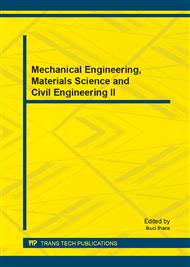p.510
p.516
p.521
p.525
p.529
p.534
p.539
p.543
p.547
The Impact Analysis of Tire Parameter for Tire Wear When Monorail Vehicle Curve Driving
Abstract:
monorail spatially coupled dynamic modeling which has three directions attached contacts wheel have been established. According to the simulation and experimental results, dynamic model was validated. based on the dynamic coupling modeling , the tire parameter influence trends for the tire wear of walking wheel’s tires were analyzed when monorail vehicle curve driving. The analysis result revealed that because the contact of straddle-beam monorail is special, with the cornering stiffness increases of walking wheel tire, by the impact of the contact radial force from guide wheels and stabilizing wheels, the lateral forces of walking wheel is gradually increasing. tire wear speed increases at a constant when monorail vehicle curve driving.
Info:
Periodical:
Pages:
529-533
Citation:
Online since:
December 2013
Authors:
Keywords:
Price:
Сopyright:
© 2014 Trans Tech Publications Ltd. All Rights Reserved
Share:
Citation:


